7 Crucial Customer Support Mistakes to Avoid
The author of this article, Maria Filippova, is a learning and development specialist working for Ansvery support outsourcing team, in the QA department. Her main role is to analyze agents' performance, pinpoint growth areas, devise and implement complex education strategies, and provide regular training sessions. She helps new agents master user communication standards as well as find their own unique voice; and for experienced agents, there is a non-stop improvement program tailored to their needs as well as the demands of the customer service market.
For the last several years, I have got used to writing to customer support at every opportunity. Sometimes I am driven by the call of duty and sometimes – by a personal necessity. More than once, I tapped the Contact us button merely to check how yet another brand handles customer requests. As a result, I am now in possession of a whole collection of support communication examples – both good and bad. Good ones we will save for later; today, we shall look at the top seven support mistakes that can turn a user into a fire-breathing dragon.
Each mistake description will be accompanied by the results of the survey I conducted among my peers. In this survey, they needed to indicate how irritating they found particular customer support failings on a scale from 1 to 5. Corresponding graphs will clearly show what users are ready to forgive and what can spoil their relationship with the brand forever.
Read more: How to Boost User Loyalty: a Case Study From Kefir and Ansvery Support Team
And here we go:
1. The agent blames the user
In a dialogue, this mistake may appear as follows:
“ –I didn’t know that you can get this gift only for certain purchases, not all of them!
–This information can be found in the promotion description. It looks like you simply missed it”.
We should not blame the user directly, even if their actions actually caused the issue in question. If the user is truly to blame, it is best to avoid pointing the finger at them. Instead, try describing the situation in such a way that they guess what has happened by themselves. The more delicately you put it, the stronger the chance is the user realizes the error of their ways, admits it is all their fault and apologizes. On the contrary, blaming users explicitly usually provokes aggression, regardless of whether they believe you or not. If they do not believe you, they will feel insulted. If they do believe you… Well, no one likes admitting their mistakes. So very often, in such cases, users decide that the best defence is a good offence. They will fight their corner to the last and try to find circumstances that will justify them and shift the blame onto you.
“– Well, maybe you need to use a normal font of normal size so that people could actually read it! The letters are so small! I’m sure you’ve done it on purpose so that people don't notice your deceit!! Cheats and liars!”
It is even worse if a company is at fault, but support will not admit their mistakes, trying to pin it on the customer instead.
“ – Your order arrived at a different delivery point in a neighbouring town.
– And how did this happen?
– Most likely, you selected the wrong delivery point when placing the order.
– No, this was not the case! I had three items in one order, and two of them were delivered to my home by a delivery guy! There was no need for me to choose a delivery point!”
If you do not own your mistakes, you are on a slippery slope which will quickly lead you into the pit of user indignation. Even if you do not lose a customer at this point, you will definitely lose their respect and trust.
Is it annoying?
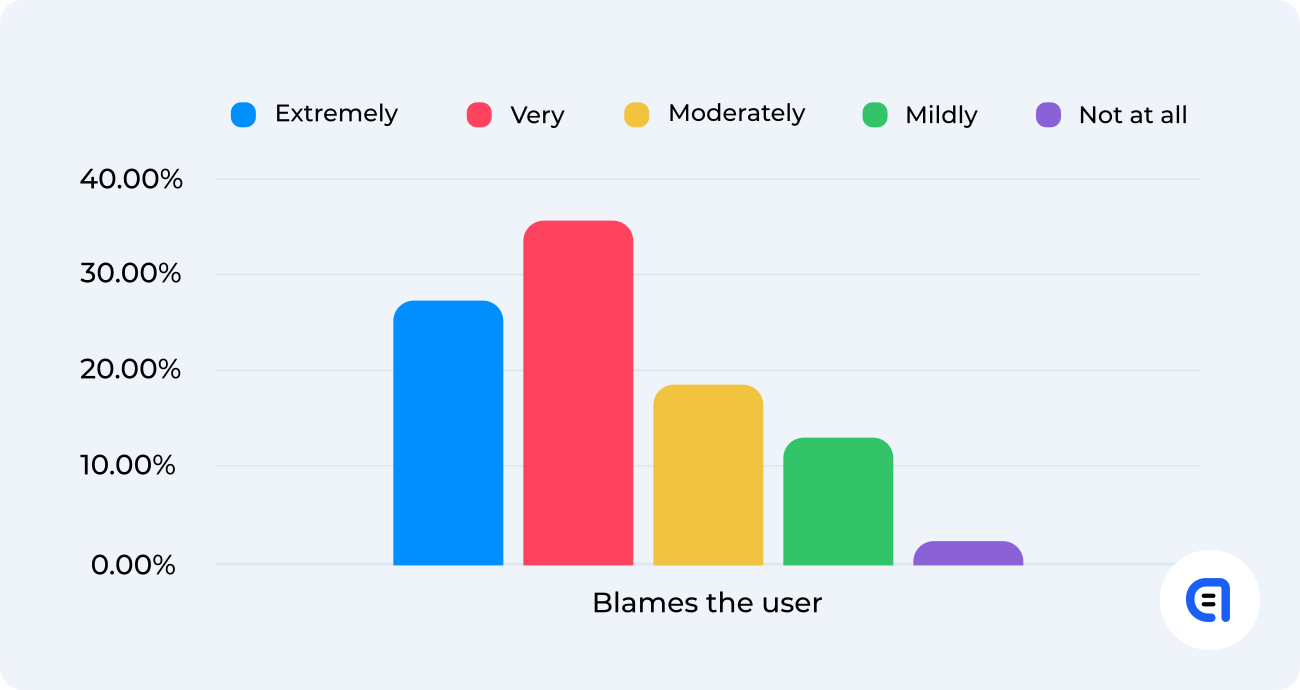
Read more: How to improve app rating: success story by Ansvery and SketchAR
2. The agent blames another department
“– You know, your customer support is just awful!
– I only work with refunds; you have been talking to the first-tier support.”
One can, of course, understand what made the agent distance themselves from the department that had not done so well. They are facing an angry user who blames them for all their poor experience. At the same time, the agent knows that neither they nor their department is responsible for the user’s frustration. They can defend themselves and deflect a blow. The temptation is too strong.
However, to set up another department means to damage the company image. It will look like the right hand does not know – or does not care - what the left one is doing. And though my small research shows that “covering yourself by pointing a finger at another department” does not irritate users too much, it hints at overall incompetence. Not to mention that if you get a customer who is outright furious, your desire to avoid responsibility will not calm them down.
Is it annoying?
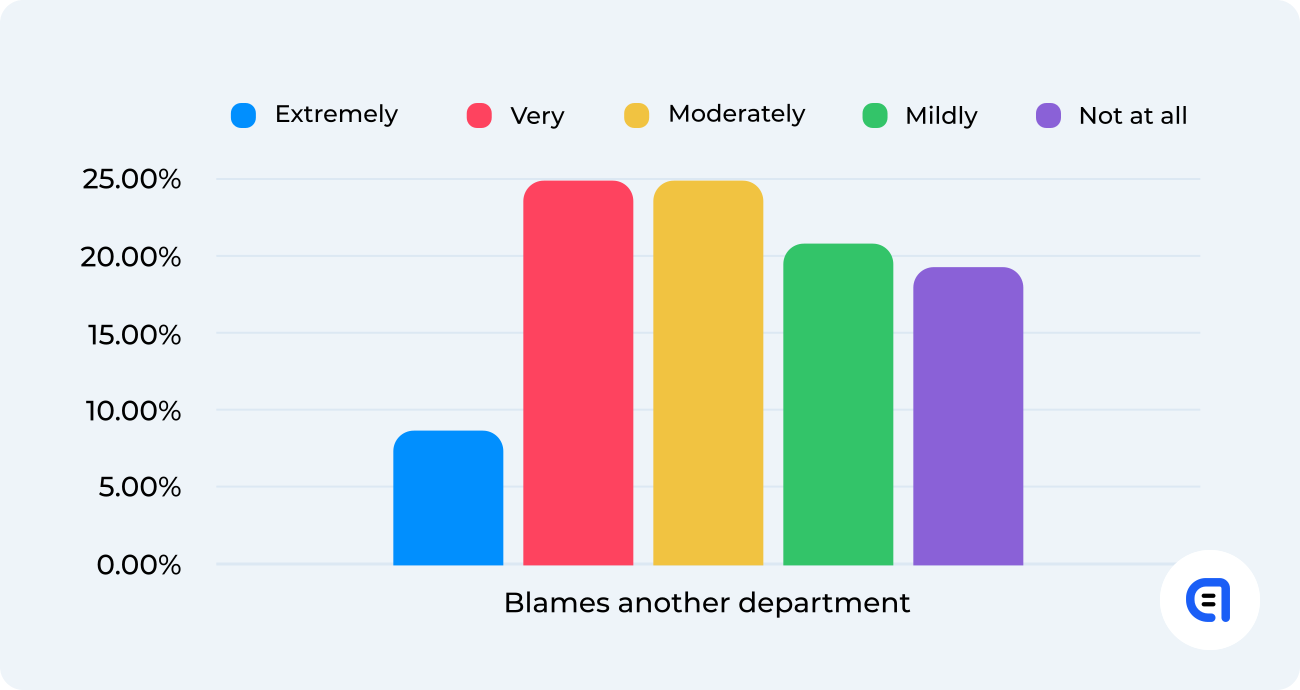
3. The agent uses canned responses without any editing
A canned response is not as terrible as it often appears in various guides on the ideal support. A well-constructed canned text can save your agents a lot of time and effort when there is, for example, a massive glitch in the system that affects hundreds of users and you need to communicate the same information to all of them. A solid canned response to a typical issue can also help agents conserve their strength and apply it later to more complicated situations. However, this does not mean you should never change your canned texts to fit a particular user. Firstly, it is impossible to create a canned text that will match all possible phrasings of the same question. If your reply deals with the subject matter of the question but does not fit its form, the user may feel that they have not received a response to their particular query. It is a subtle difference, but it is such finer points that separate good support from a great one. Secondly, users nowadays can easily tell when you are sending them a canned response. It can be unpleasant in itself – a user may think that you have not paid enough attention to their case and sent them a standard reply to get rid of them.
If your support also uses bots – for example, as the first tier – you need to be extra careful with canned responses. Should you not personalize them enough, they may sound just like your bot replies.
The user may not even know that they have stopped talking to a bot and started a conversation with a human. And if the difference is barely visible, what is the point of human support? So try to add some personal twist to your replies, even into canned ones. Demonstrate your humanity.
Is it annoying?
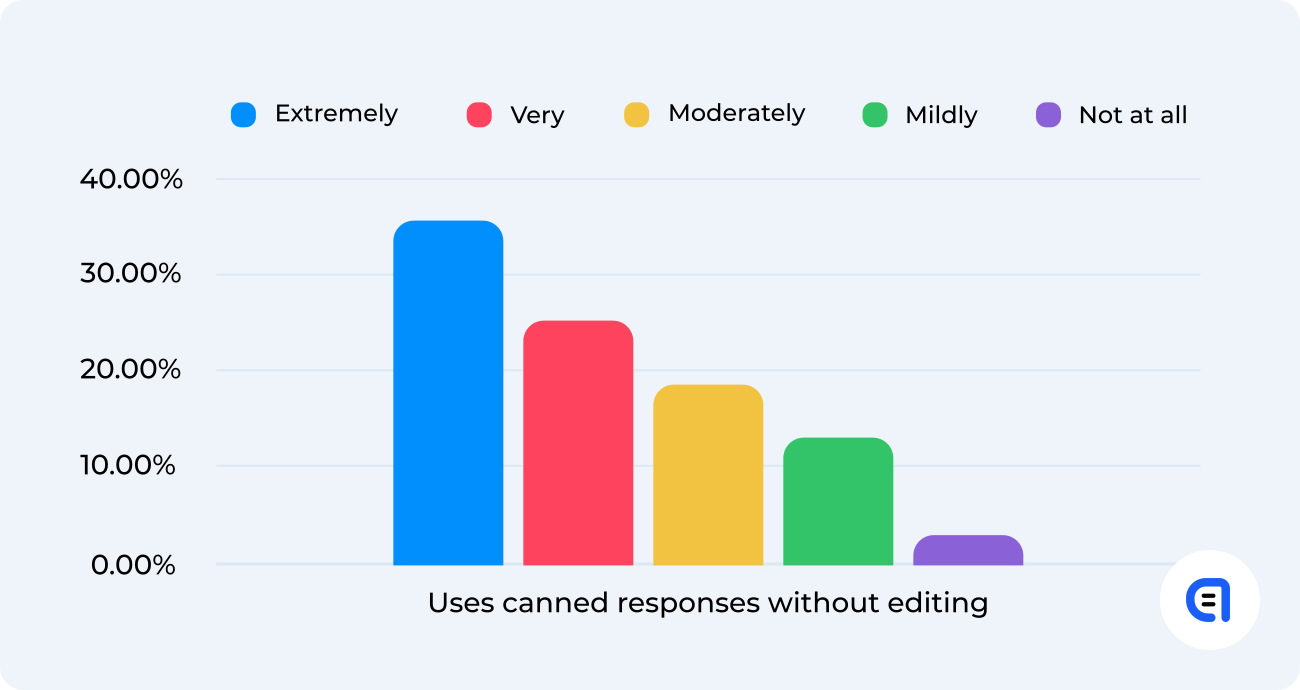
Read more: Кey Support Trends: Learn from the Past and Change the Future
4. The agent’s style is dramatically different from the style of the canned replies
Let us assume that you have avoided mistake number 3 and added some personalized phrases into a canned reply. So the response the user got turned out to be quite good – full of details and humanity. However, for some reason, it was not enough for the user, and they decided to clarify something. Unfortunately, you do not have a canned response for their second question, so you write a reply yourself, but you make it brief and dry. As a result, the style of your two messages differs significantly. From the point of view of the user, it looks somewhat strange – either the agent is annoyed that the user asked another question, or the agent finds themselves in some sort of Jekyll and Hyde situation. Neither of these options matches the user’s understanding of quality support. So it is always best to try and maintain the tone of your original message during the whole conversation.
Is it annoying?
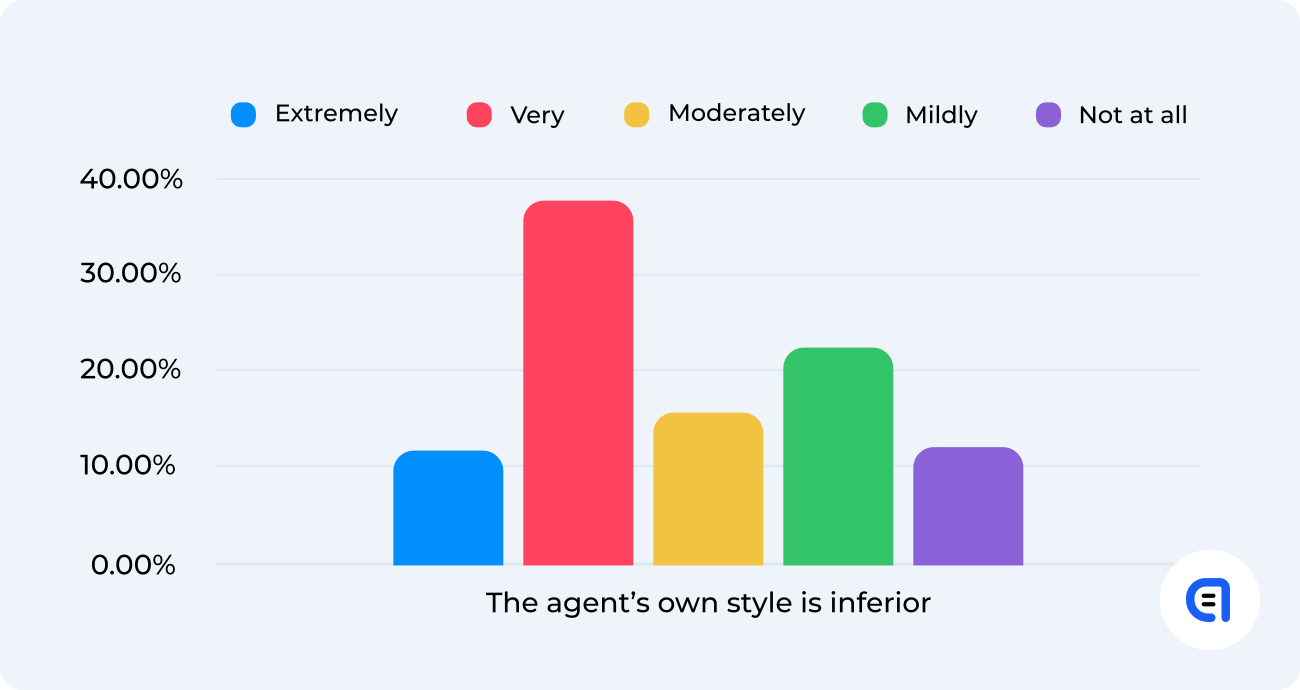
5. The agent asks a question and immediately leaves the chat
For example:
“Is there anything I can help you with?”
*Ticket resolved*
If you do not intend to get a reply, why ask a question? Your users may become confused.
And if you want to prompt your user to contact you again, in case they have any other questions, it is best to phrase your encouragement as a statement.
Is it annoying?

6. The agent asks for excessive information
Unfortunately, it is one of the most common mistakes in user-support communication. There can be several reasons for that. Sometimes it is due to simple inattentiveness – the agent misses certain details in the user's message and requests the data they already have.
Sometimes the request goes from one agent to another, and the latter is not in a hurry to read the conversation from the beginning and asks the same questions their predecessor did.
And sometimes, the agent does not know the project well enough and asks the user for the information they should have known themselves.
This mistake is relatively easy to avoid. All you have to do is keep your knowledge of the project up-to-date, give user requests your full attention, and remember that unnecessary questions are one of the most irritating issues in conversations with support.
Is it annoying?
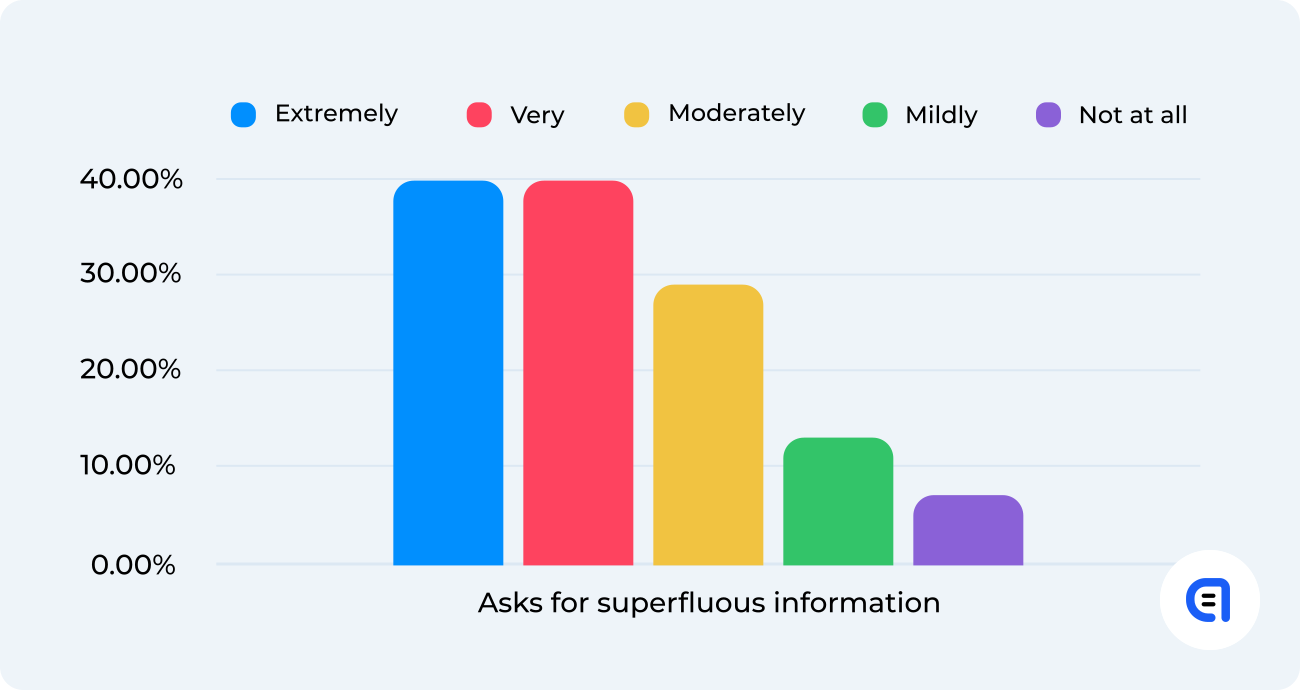
7. The agent answers only one question when the user asks two or more
And this is our absolute leader in turning slightly irritated users into boiling cauldrons of fury. Few things annoy users more than the questions that go unanswered. It does not matter why this happens – perhaps, the agent was simply inattentive. Or maybe they decide to deal with one question at a time but forget to inform the user about this decision. Or perhaps the agent does not perceive a very emotive phrase as an actual question that demands an answer but sees it as a sort of rhetorical device. However, users are not interested in whys. They get upset that their concerns and frustration are being ignored. No one likes to repeat themselves, even in an oral conversation. Repeating your questions in a written form is far worse, especially if you are typing on your mobile device. Even the most patient user may lose their temper.
Is it annoying?
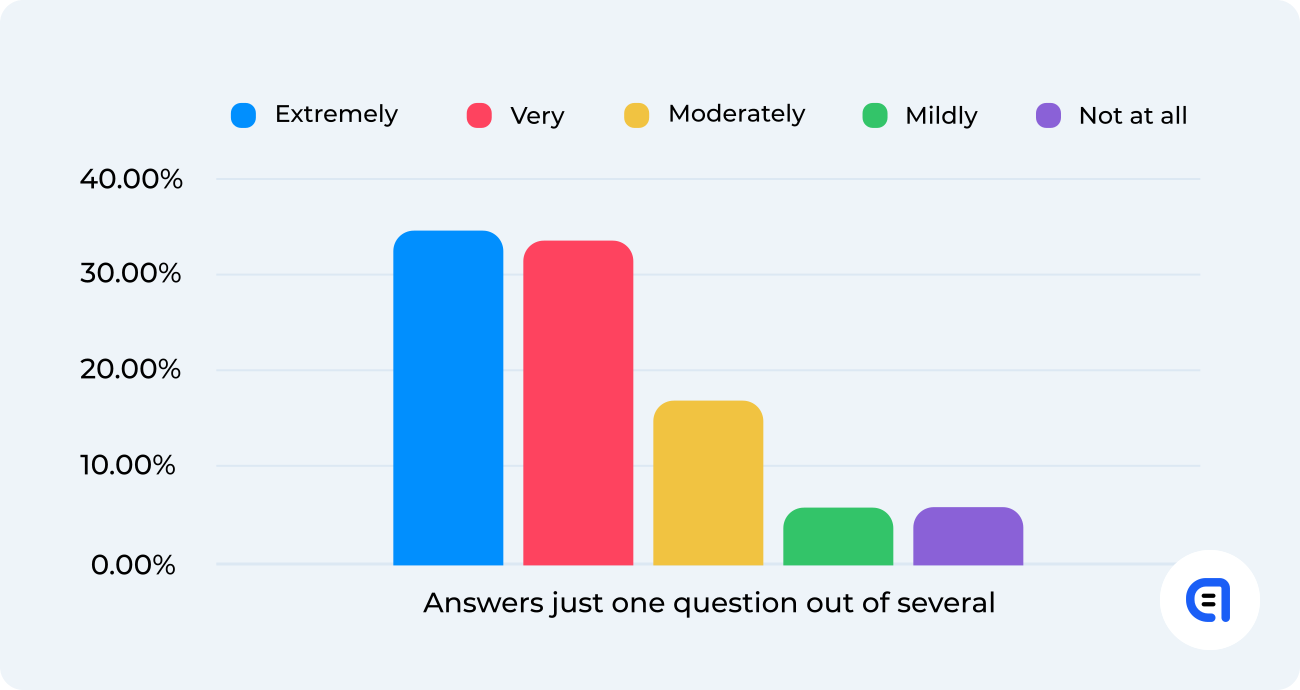
Takeaway
It is possible that having studied this list, you will feel that some of these mistakes would not matter to you if you were the customer. Well, most probably, you are calm and reasonable and ready to explain your problem to the support several times in order to get results. All the better for you. However, experience shows us that the most sound strategy is to prepare for the worst every time – namely, for a user who is more sensitive, who easily loses their temper and is not ashamed to demonstrate their frustration. By treating your customers like porcelain, you are more likely to avoid numerous unpleasant consequences, such as negative reviews and uncomplimentary word of mouth.
So, if your company has customer service, or if you are a part of a support team yourself, try to avoid all the mistakes mentioned in this article.




